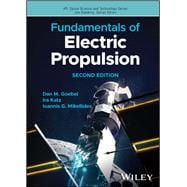Understand the fundamental basis of spaceflight with this cutting-edge guide
As spacecraft engineering continues to advance, so too do the propulsion methods by which human beings can seek out the stars. Ion thrusters and Hall thrusters have been the subject of considerable innovation in recent years, and spacecraft propulsion has never been more efficient. For professionals within and adjacent to spacecraft engineering, this is critical knowledge that can alter the future of space flight.
Fundamentals of Electric Propulsion offers a thorough grounding in electric propulsion for spacecraft, particularly the features and mechanisms underlying Ion and Hall thrusters. Updated in the light of rapidly expanding knowledge, the second edition of this essential guide detailed coverage of thruster principles, plasma physics, and more. It reflects the historic output of the legendary Jet Propulsion Laboratory and promises to continue as a must-own volume for spacecraft engineering professionals.
Readers of the second edition of Fundamentals of Electric Propulsion readers will also find:
- Extensive updates to chapters covering hollow cathodes and Hall thrusters, based on vigorous recent research
- New sections covering magnetic shielding, cathode plume instabilities, and more
- Figures and homework problems in each chapter to facilitate learning and retention
Fundamentals of Electric Propulsion is an essential work for spacecraft engineers and researchers working in spacecraft propulsion and related fields, as well as graduate students in electric propulsion, aerospace science, and space science courses.








